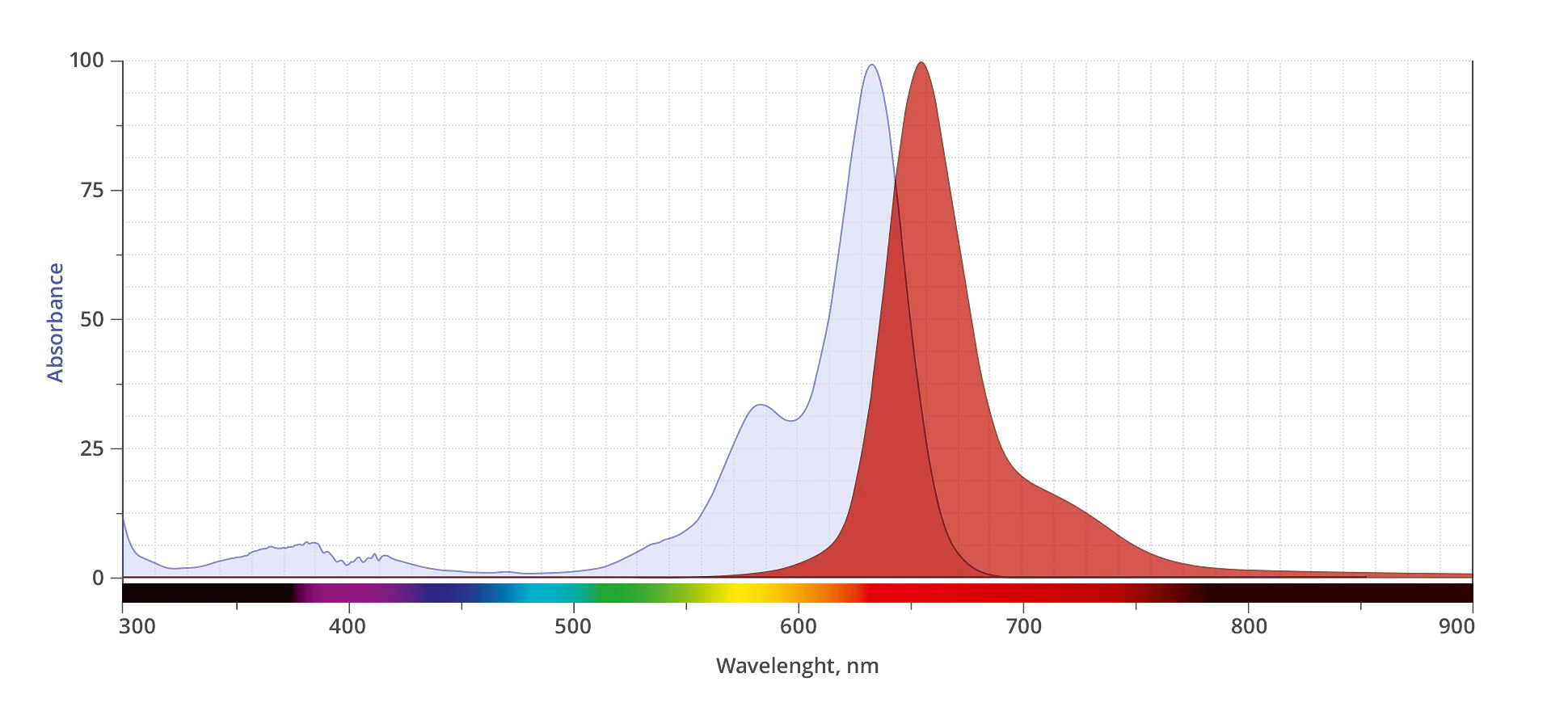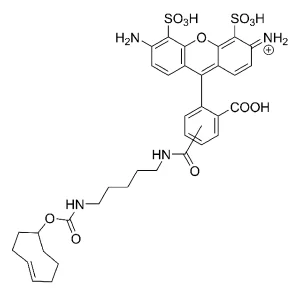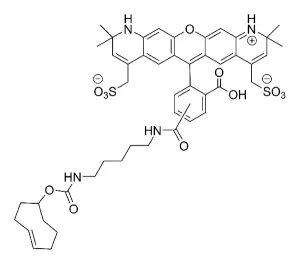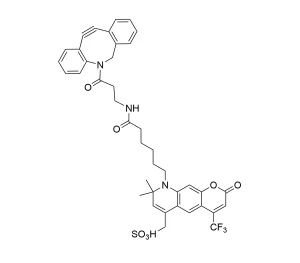Menu
AZDye™ 633 Picolyl Azide is an advanced fluorescent probe that incorporates a copper-chelating motif to raise the effective concentration of Cu(I) at the reaction site to boost the efficiency of the CuAAC reaction, resulting in a faster and more biocompatible CuAAC labeling. Up to 40-fold increase of signal intensity, compared to conventional azides, was reported (see Selected References).
AZDye™ 633 Azide is a bright and photostable far-red fluorescent probe with excitation ideally suited to the 633 nm or 635 nm laser excitation source. AZDye™ 633 Azide is water-soluble, pH-insensitive from pH 4 to pH 10. AZDye™ 633 spectrally is almost identical to Alexa Fluor® 633, DyLight® 633 or CF® 633 Dye. Combination of superior brightness and very low autofluorescence background signal in most biological samples in far-red spectral region allows for very sensitive detection of alkyne-labeled biomolecules.
| Unit Size | 1 mg, 5 mg, 25 mg |
|---|---|
| Abs/Em Maxima | 631/651 nm |
| Extinction Coefficient | 100,000 |
| Flow Cytometry Laser Line | 633 nm or 647 nm |
| Microscopy Laser Line | 633 nm or 647 nm |
| Spectrally Similar Dyes | Alexa Fluor® 633, CF® 633 |
| Molecular weight | 1200.26 |
| CAS | N/A |
| Solubility | Water, DMSO, DMF |
| Appearance | Blue solid |
| Storage Conditions | -20°C. Desiccate |
| Shipping Conditions | Ambient temperature |





Stay in the Loop
Join Our Online Community
The latest news, tips, and product releases delivered conveniently to your inbox.
We’re social scientists! Let’s connect.
Together we breakthroughTM

©Vector Laboratories, Inc. 2023 All Rights Reserved.
How do I Request a Quote?
To request a quote for products: